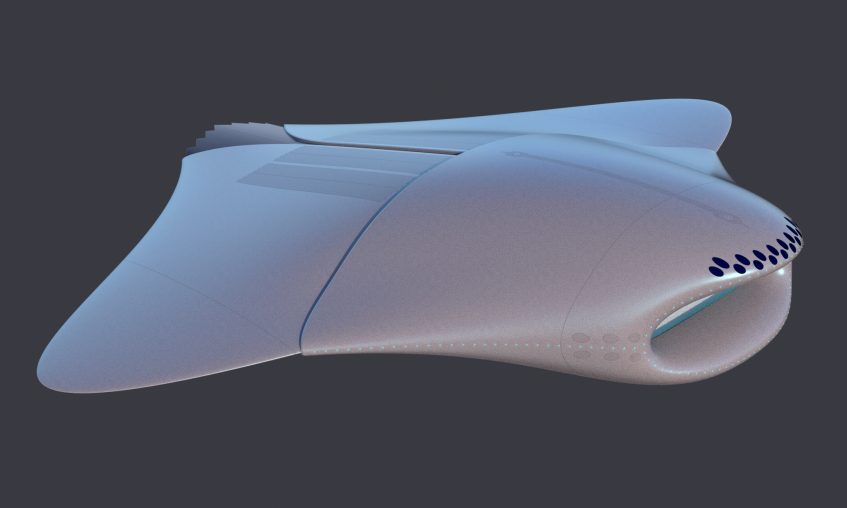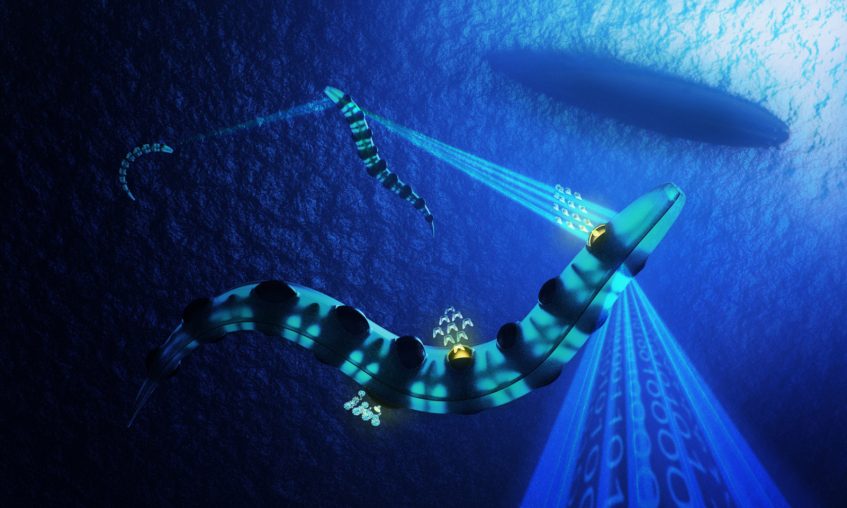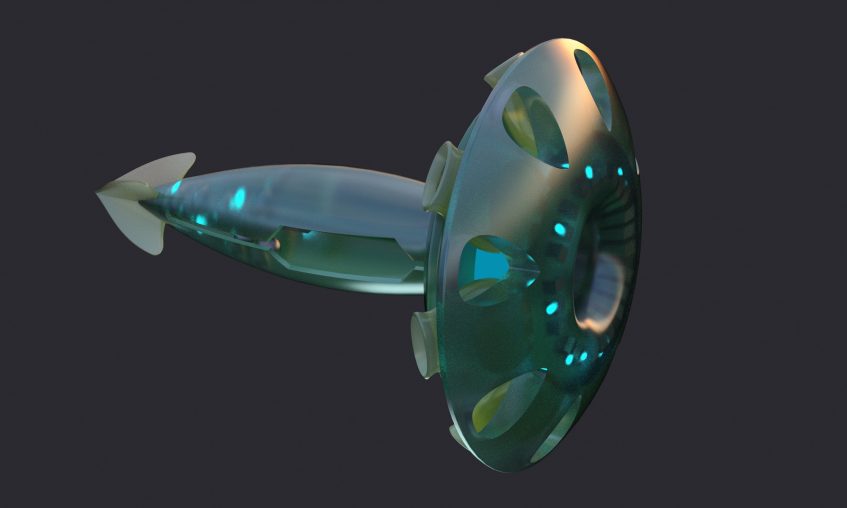Earlier this year, the Royal Navy ran the Nautilus 100 challenge together with UK Nest, a not-for-profit Technology forum that “promotes the Engineering, Science and Technology interests of UK Naval Defense”. Scientists, designers, and engineers from across defense and aerospace sectors were tasked with envisioning the future of underwater warfare.
20 participants, aged between 16 and 34, from companies including BAE systems, Lockheed Martin, the MOD, QinetiQ and Rolls Royce came up with a number of designs. Innovations included flying-fish drones, unmanned eel-like vehicles and, perhaps most interestingly, 3D printed dissolvable micro-drones, and a 3D printed submarine, which have now been unveiled to the public by the Royal Navy.
3D printing under the sea
The “Nautilus 100 mothership” submarine resembles a hybrid deep-sea creature with a whale shark mouth and the body of manta ray. Its hull is designed to be 3D printed from “combination of light but strong acrylic materials bonded to super strong alloys”, to help withstand the extreme pressure at the depths of the ocean.
Included on the hull are tiny graphene scales, controlled by an electric current, for reducing noise, to morph in shape to further mimic the appearance of a ray.

3D printing technology would also play a part in some of the submarine’s defense systems.
The Mothership would be capable of launching eel-like unmanned underwater vehicles, “each using blue-green laser energy to communicate, forming a self-meshing underwater network with secure command and control (C2) applications”.
The eels in turn would contain pods carrying dissolve on-demand sensors and micro-drones (made of cold saltwater-soluble polymers) produced by 3D printers. These micro-drones would be used in a number of different ways, such as data gathering or vehicle escort duties.

Futuristic or Far-fetched?
Voices from the Royal Navy itself are optimistic. Rear Admiral Tim Hodgson compared the innovation behind the submarine designs to “Nelson’s tactics at Trafalgar” and the “revolutionary Dreadnought battleships”.
Commander Peter Pipkin, the Royal Navy’s Fleet Robotics Officer added, “Today’s Royal Navy is one of the most technologically advanced forces in the world, and that’s because we have always sought to think differently and come up with ideas that challenge traditional thinking.”
The designs however have also been criticized by the BBC’s Jonathan Peake, writing that in reality, “there simply isn’t the resources to turn these latest dreams into reality,” and noting that most of its expenditure would likely go on conventional nuclear submarines and aircraft carriers.

With a commitment from the UK’s Ministry of Defence to spend 1.2% of its budget on innovation, 3D printing technologies certainly have some space to thrive. In 2016, the Royal Navy also launched its first 3D printed airplane drone.
More projects will certainly on the radar if the Royal Navy are to compete on a international level alongside forces like the Marines, and the U.S. Navy.
For more on defence and 3D printing, subscribe to our last newsletter and follow us on Twitter.
Featured Image: Simulation of the Nautilus 100 in action. Photo via: UK Nest.


